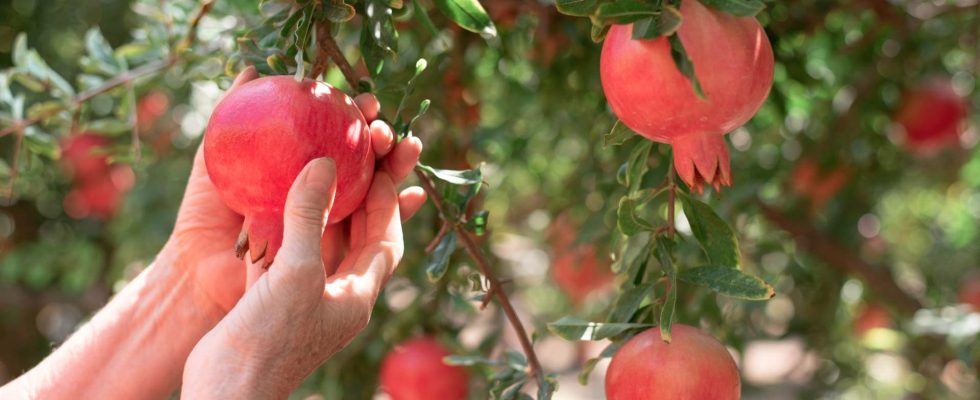The pomegranate tree: what is it?
Contrary to what one might imagine, the pomegranate tree is not native to the area around Granada, but to North Africa.
Most often bushy, with slender, angular branches, with or without thorns, it bears light green deciduous leaves turning reddish in autumn. The auxiliary flowers, bright red to scarlet, are characterized by a tubular and shiny calyx.
The fruits are born globular, the size of a fist, barely flattened and crowned by a persistent calyx, with leathery and thick skin, first green then reddish ivory sometimes marbled with bright spots. Inside, boxes separated by partitions are filled with “grenadine” colored seeds.
Sun but not too much wind
Not very picky about the nature of the soil, the pomegranate tree however prefers deep and shallow lands. The best results are obtained in alluvial areas. The exposure will be as warm as possible without its roots lacking water. It tolerates the proximity of the sea and relative humidity quite well. You will plant it sheltered from high winds.
On shoots that are too bulky, prune by severely cutting back large branches and removing superfluous ones. Remember that flowering takes place on the shoots of the year.
A dwarf pomegranate tree to grow in a pot
If in the South you grow it in the ground, in colder situations try growing it in pots. Choose a pot with a fairly large diameter (25 to 30 cm). A significant drainage at the bottom of the pot and rich soil will allow you to have flowers for a long time.
Choose the variety Nana which does not exceed one meter. When winter arrives, reduce watering and place it under cover (5 to 70). From spring, gradually increase them. You can also leave it in the ground all winter: in these conditions, this dwarf pomegranate can very well resisted to -15° by the seaside.
Simple propagation: cuttings
Propagation can be ensured by seed, cutting, sucker or graft.
Sowing
It is carried out in spring, but does not faithfully reproduce the qualities of the fruit.
Cuttings
This is the simplest process. In March, cut off fractions of stems (20-25 cm) which you cut immediately below one eye. Plant so that only one bud (or even two) is above the ground.
Suckering
The suckers which develop at the base of the tuft will be separated from the mother plant in spring. Facilitate the release of roots on the sucker by mounding the base a few months before collecting the suckers.
Grafting
It is rarely used, except to propagate delicate or not very vigorous varieties. Practice it in March-April, in lunge, or in July-August, in tackle.
The pomegranate tree has multiple virtues
The flowers and bark of the pomegranate tree are good astringents. The bark of the root is a vermifuge and the fruits are used to make grenadine, the aperitif of all children. The yellow part of the fruit’s husk, which contains a lot of tannin, was once used to make a powerful dye for leather. The fruits can be used to make sorbets and jellies.

